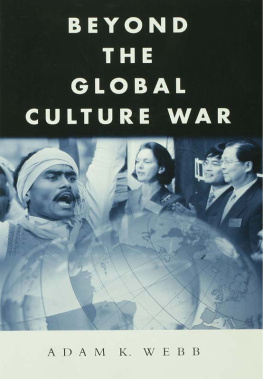This book is dedicated to my father, Victor Webb, from whom I first heard the story of the Polish concentration camps in Scotland
First published in Great Britain in 2016 by
Pen & Sword History
an imprint of
Pen & Sword Books Ltd
47 Church Street
Barnsley
South Yorkshire
S70 2AS
Copyright (c) Simon Webb 2016
ISBN: 9781473846296
PDF ISBN: 9781473846326
EPUB ISBN: 9781473846302
PRC ISBN: 9781473846319
The right of Simon Webb to be identified as the Author of this Work has been asserted by him in accordance with the Copyright, Designs and Patents Act 1988.
A CIP catalogue record for this book is available from the British Library
All rights reserved. No part of this book may be reproduced or transmitted in any form or by any means, electronic or mechanical including photocopying, recording or by any information storage and retrieval system, without permission from the Publisher in writing.
Typeset in 11.5 pt Ehrhardt MT by
Replika Press Pvt Ltd, India
Printed and bound in the UK by
CPI UK
Pen & Sword Books Ltd incorporates the imprints of Pen & Sword Archaeology, Atlas, Aviation, Battleground, Discovery, Family History, History, Maritime, Military, Naval, Politics, Railways, Select, Social History, Transport, True Crime, and Claymore Press, Frontline Books, Leo Cooper, Praetorian Press, Remember When, Seaforth Publishing and Wharncliffe.
For a complete list of Pen & Sword titles please contact
PEN & SWORD BOOKS LIMITED
47 Church Street, (Barnsley: South Yorkshire, S70 2AS, England
E-mail:
Website: www.pen-and-sword.co.uk
Contents
List of Plates
Introduction
H istory, it is often said, is written by the victors. Nowhere is the truth of this aphorism more neatly demonstrated than in the probable reaction of many readers to the title of this book. For most people in Europe and America, the very expression concentration camp is inextricably linked to the horrors of the Third Reich; mention of concentration camps invariably conjuring up images of Auschwitz and Dachau. From this perspective, the words British concentration camp appear strange, almost oxymoronic. It was not always so. In fact it is only since the end of the Second World War, and the allied victory over Nazi Germany, that concentration camps and Germany have become associated in this way.
It might help to break this strong mental association of one particular countrys use of such camps if we look now at Plate 1, which shows a newspaper headline from a century ago. It is from the Manchester Guardian of 4 December 1914 and reads: DISORDER AT LANCASTER CONCENTRATION CAMP. There is something oddly disconcerting about such a headline; it looks more as though it might be from some dystopian fantasy about the future, rather than a relic of Britains past. It should be remembered that this was not a prisoner of war camp, but held only civilians. In other words, it really was a concentration camp.
Before looking briefly at one or two other examples of the kind of establishments which will be examined in this book, perhaps it should be pointed out that order at concentration camps of the kind mentioned in the above newspaper headline was maintained in the most ferocious manner. The disorder at Lancaster Concentration Camp was dealt with by a bayonet charge against unarmed civilians. On 19 November that same year, protests at another concentration camp on the Isle of Man resulted in troops firing volleys of shots at the inmates, killing six of them. Among the dead were two men who had, until three months earlier, been working as waiters in hotels.
Having considered one instance of concentration camps operating in Britain a hundred years ago, perhaps a few more examples might be helpful in showing that such camps were being operated either in the United Kingdom or by the British army overseas for much of the twentieth century.
In 1901 and 1902 more than 22,000 children under the age of sixteen died of starvation and disease in concentration camps run by the British army.
Moscow radio and the Soviet newspaper Pravda claimed in 1945 that Britain had allowed the Polish government in exile to establish a number of concentration camps in Scotland, where the prisoners were predominantly communists and Jews. These statements turned out to be quite correct.
Although the use of slave labour had been defined during the Nuremberg trials as a crime against humanity, in 1946 a fifth of Britains agricultural labourers were effectively slaves, held in a network of closely guarded camps. The following year, 25 per cent of the land workforce in Britain was provided by this same forced labour.
In 1972, almost 1,000 political prisoners in the United Kingdom were being held behind barbed wire at a former RAF base. Some of these men would spend years being detained without any right to a trial. The European Commission on Human Rights ruled that a number of them had been subjected to torture.
Before going any further, it might be helpful to define just what we mean by concentration camps and to examine the difference between concentration camps per se and the extermination camps run by the Nazis at locations in Poland such as Treblinka and Sobibor.
Here are two definitions of the expression concentration camp, drawn at random from books in the reference department of the local lending library. The first, from the 2003 edition of the Compact Oxford English Dictionary, tells us that a concentration camp is a camp for detaining political prisoners. The second, from the 2005 edition of Brewers Dictionary of Phrase and Fable, says that a concentration camp is A guarded camp for non-military (usually political) prisoners. In neither of these definitions is there the suggestion that concentration camps are places where the inmates are massacred or even badly mistreated. This misunderstanding of the essential nature of concentration camps, that they were somehow associated with genocide, arose after the end of the Second World War, when newsreels at the cinema showed ghastly scenes from German camps such as Belsen, where many had died in the later stages of the war. Now Belsen was an example of a very badly run and cruelly administered concentration camp, but its primary purpose was never the murder of inmates. The many deaths there were an incidental outcome; precipitated by gross overcrowding and other exceptional circumstances.
Later on, when information about camps such as Auschwitz became available, concentration camps began to be associated with mass killing in gas chambers. This was because in addition to the concentration camp at Auschwitz, there was also a killing installation. The two parts of the camp were separate though, and the idea that concentration camps as such were part of the systematic destruction of the enemies of the Third Reich is quite mistaken. The aim of concentration camps is to hold prisoners securely; the aim of death camps is to dispose of prisoners as they arrive. These are two quite different types of establishment.
After the end of the Second World War, it was said that of all the misleading Nazi propaganda, no lie was more successful than the one which suggested that concentration camps were an invention of the British and that the Germans had only developed and expanded a concept which had its roots in the British Empire. The idea that the British invented concentration camps was sedulously peddled during the 1930s by the leaders of the Third Reich. In February 1939, for example, Sir Nevile Henderson, British ambassador to Germany, had a meeting with Hermann Goering. In the course of their encounter in Berlin, Henderson denounced the loathsome and detestable brutalities taking place in concentration camps such as Dachau and Buchenwald. For answer, Goering went to a bookshelf and took down the volume of a German encyclopaedia covering the letter K and showed the ambassador the entry for Konzentrationslager, which began; First used by the British in the South African War
Next page














